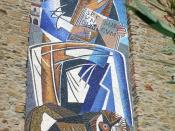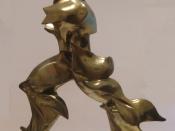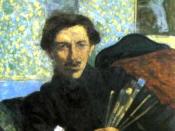Essay
Futurism began in Italy in the early 20th century. A group of Italian artists were interested in Mechanical & Technological arena's and the speed at which developments were occurring.
Their goal was to embody the energy of the constantly evolving world. They discovered better ways to capture movement in art, by using overlapping and blurring of outlines. Through this, they better captured the energy and power o forms moving through space.
Primarily cubism and the flattening of pictorial space influenced futurism. Other influences were impressionism's urban subject matter, post-impressionism and the phenomenon of speed.
Futuristic artworks often depicted machines, athletes or cities; sometimes abstracted. They conveyed the power and movement of the modern revolution. Artists used overlapping forms flattening of pictorial, space bright colours, Seurat's method of divisionism and urban subject matter. The artworks often had a patriotic, aggressive and fearless theme. Futurists believed that beauty could only exist in a struggle.
The founding member of the futurists was Umberto Boccioni. Other member artists include:
1. Carlo Carra
2. Giacoma Balla
3. Gino Severini
4. Luigi Fussolo and the Dadaist; Marcel Duchamp
Umberto Boccioni was born in Italy in 1882 and 1916. He was the founding member and leader of the futurist movement.
He was influenced by the divisionist theories of Giacoma Balla and he had a great in the interaction of visual art and psychology. He was technically inventive and focused on the effects of industrialisation.
He was very strict when it came to aesthetic considerations and this is what ultimately led him to become a great futurist painter and sculptor.
Examples of the beauty of his colours can be seen in his paintings, "the city rises" 1910-11 and "riot in the gallery" 1909.
He uses 20th century subject matter and greatly influenced by Seurat's pointillism and cubist...


